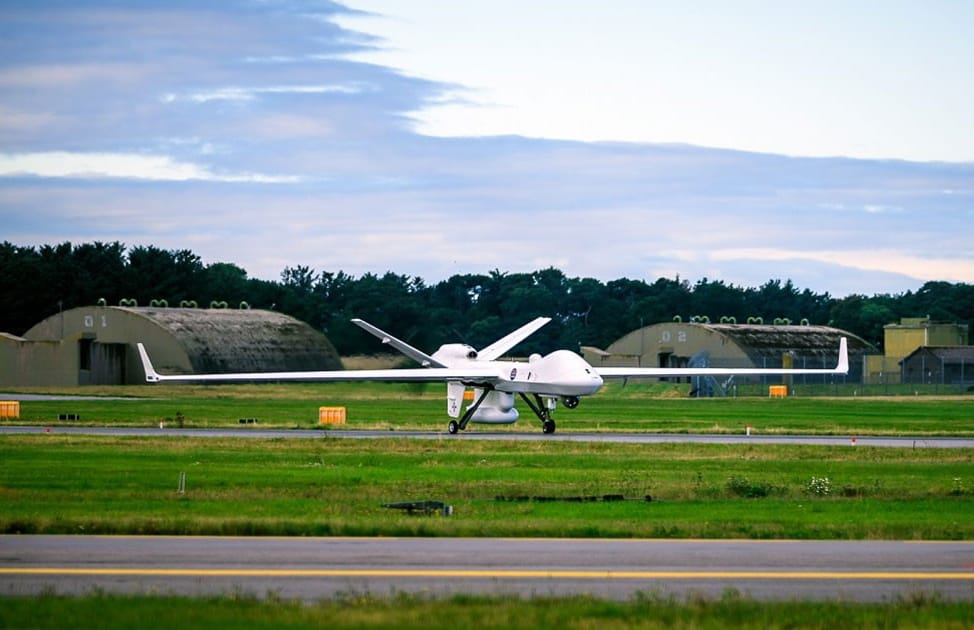



General Atomics Aeronautical Systems, Inc. (GA-ASI) has flown its MQ-9B SeaGuardian UAS (unmanned aerial system) during the first point-to-point domestic flight of an unmanned aircraft ever approved by the UK’s Civil Aviation Authority (CAA). The aircraft flew from Royal Air Force (RAF) Waddington to RAF Lossiemouth while being controlled by NATS, the UK’s civilian Air Navigation Service Provider.
The civil-registered aircraft is operating from RAF airfields as part of an ongoing set of demonstrations being conducted by GA-ASI for the RAF, who have ordered a system known as Protector RG Mk1 that is based on the MQ-9B. The goal of these demonstrations is to showcase the many operational capabilities of the MQ-9B, including the platform’s advanced maritime Intelligence, Surveillance and Reconnaissance (ISR), industry-leading endurance, and interoperability with NATO partners. The demos will culminate in the completion of Exercise Joint Warrior.
Among the capabilities on display is GA-ASI’s revolutionary Detect and Avoid (DAA) system, a safety and situational awareness enhancement designed to support Protector’s flight in non-segregated UK airspace, as well as the platform’s capability to integrate into broader European airspace. DAA will enable Protector to operate amongst normal aviation traffic in the UK’s national airspace, unlike any other aircraft in its class. The demonstration flights are also assisting RAF Waddington, the future home of the RAF Protector Force, to prepare and integrate the new aircraft into its daily operations.
Tom Gratton, CAA Airspace Regulator, commented: “The Airspace Coordination Notice issued by the CAA for this series of demonstration flights in UK airspace is the largest and most meticulous we have ever produced so that the airspace integration of SeaGuardian is at the highest level of safety.”
Robert Schoeffling, GA-ASI’s Vice President of International Strategic Development, said: “We appreciate the cooperation and collaboration with the CAA and NATS in helping to move the industry forward. This successful flight paves the way not only for future operations of Protector in UK airspace, but also for other civil and commercial UAS flights.”
Mark Watson, Head of Unmanned Aircraft Systems Traffic Management (UTM) Service Integration for NATS, noted that the flight was controlled through more complex airspace than any previous UAS flights in the UK. “This flight required that we transfer control between multiple civil airspace sectors. The procedures for this flight were close to what we do already with conventional crewed aircraft. This helped us validate that our existing metho





Related Posts
New Drone Fires Thales Missile in Unmanned Air Combat Milestone
UAS Startup Accelerator Awards 3M in Funding
US Navy Orders Unmanned Tactical Resupply Aircraft